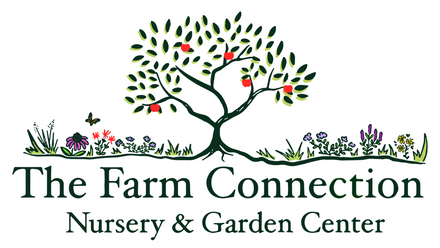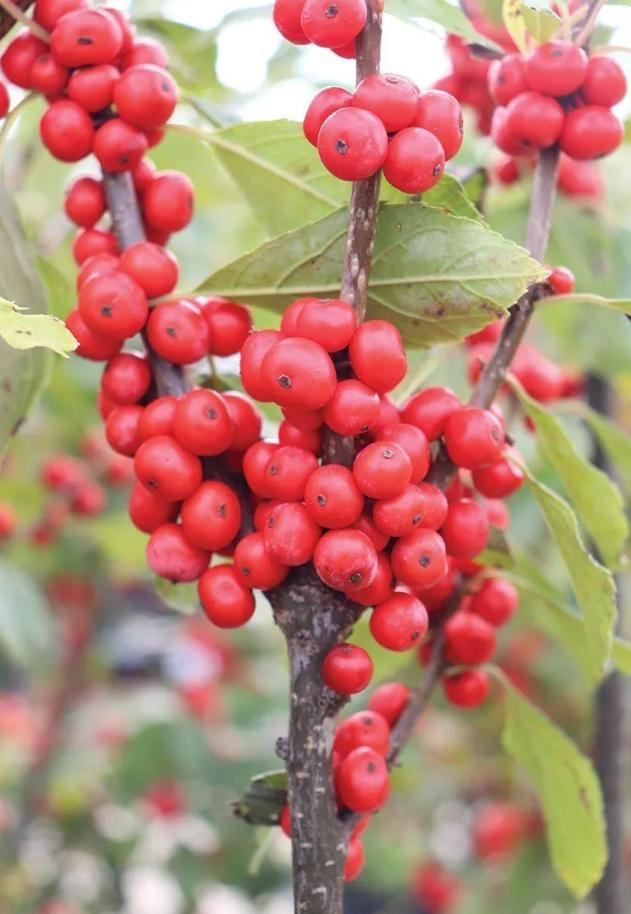Winterberry, Bare Root
Essential Winter Beauty & Wildlife Food
Winterberry, Bare Root - Bare Root / 1-2' is backordered and will ship as soon as it is back in stock.
Couldn't load pickup availability
Delivery and Shipping
Delivery and Shipping
Make sure to thoroughly review our entire "Shipping, Returns, Refunds, and Our Guarantee" page for all relevant details about ordering from our store.
Making a purchase from our store constitutes an agreement to all the conditions outlined in those policies.
We appreciate your support and look forward to being your favorite plant provider!
Subscribe to our newsletter
Sign up for exclusive offers.
Winterberry (Ilex verticillata)
Winterberry is a deciduous holly prized for its brilliant red berries that persist through the winter, offering striking color and essential food for wildlife. Native to wetlands, streambanks, and woodland edges in North America, this adaptable shrub thrives in moist conditions but grows well in a variety of landscapes. Its vibrant berries create stunning winter interest after the leaves drop, making it an excellent choice for naturalistic plantings, native gardens, and mixed hedgerows. For fruit production, male and female plants are required.
Key Characteristics
-
Vibrant Red Berries for Winter Interest
Winterberry's bright red berries provide a dramatic contrast against the winter landscape, persisting long after the leaves fall. These berries are not only visually striking but also an important winter food source for birds like cedar waxwings, robins, and bluebirds. -
Essential Wildlife Value
Beyond providing berries for birds, Winterberry offers nesting cover for small wildlife. Pollinators, such as native bees and flies, are drawn to its small, inconspicuous flowers in early summer. Pair this shrub with other native plants to create a rich, biodiverse habitat. -
Perfect for Wet Areas and Rain Gardens
Naturally found in wetlands, Winterberry thrives in moist to wet soils, making it ideal for rain gardens, streambank restoration, or planting in areas prone to standing water. It also tolerates occasional dry periods once established, showing impressive adaptability. -
Attractive Landscape Uses
Winterberry works beautifully in mass plantings, natural hedges, or mixed borders. Use it in native pollinator gardens, wildlife-friendly hedgerows, or as a backdrop for smaller plants. Its dense habit and ornamental appeal make it a standout addition to any winter landscape. -
Male and Female Plants for Fruit Set
Winterberry is dioecious, meaning male and female plants are needed for berry production. A single male plant can pollinate multiple females if planted nearby. Select a male cultivar like 'Jim Dandy' or 'Southern Gentleman' to pair with females such as 'Winter Red' or 'Red Sprite' for optimal fruiting.
Product Details
- Native Range: Eastern and Central North America
- Plant Life Cycle: Perennial, Deciduous Shrub
- Sun Requirements: Full sun to part shade
- Soil Requirements: Medium to wet soils; prefers acidic conditions
- Mature Height: 3-12 feet, depending on cultivar
- Bloom Time: May to June
- Bloom Color: Small, inconspicuous white to greenish-white flowers
- USDA Hardiness Zones: 3-9
Winterberry brings stunning winter beauty and unmatched ecological benefits to your garden. With proper placement and a pollination partner, you can enjoy its iconic red berries that light up the cold season while supporting wildlife year-round.
-
Sun RequirementsFull Sun, Part Sun/Shade
-
Soil RequirementsMedium-Wet
-
Bloom ColorWhite
-
Bloom TimeMay, June
-
USDA Hardiness ZonesZone 3, Zone 4, Zone 5, Zone 6, Zone 7, Zone 8, Zone 9+
Payment & Security
Payment methods
Your payment information is processed securely. We do not store credit card details nor have access to your credit card information.




